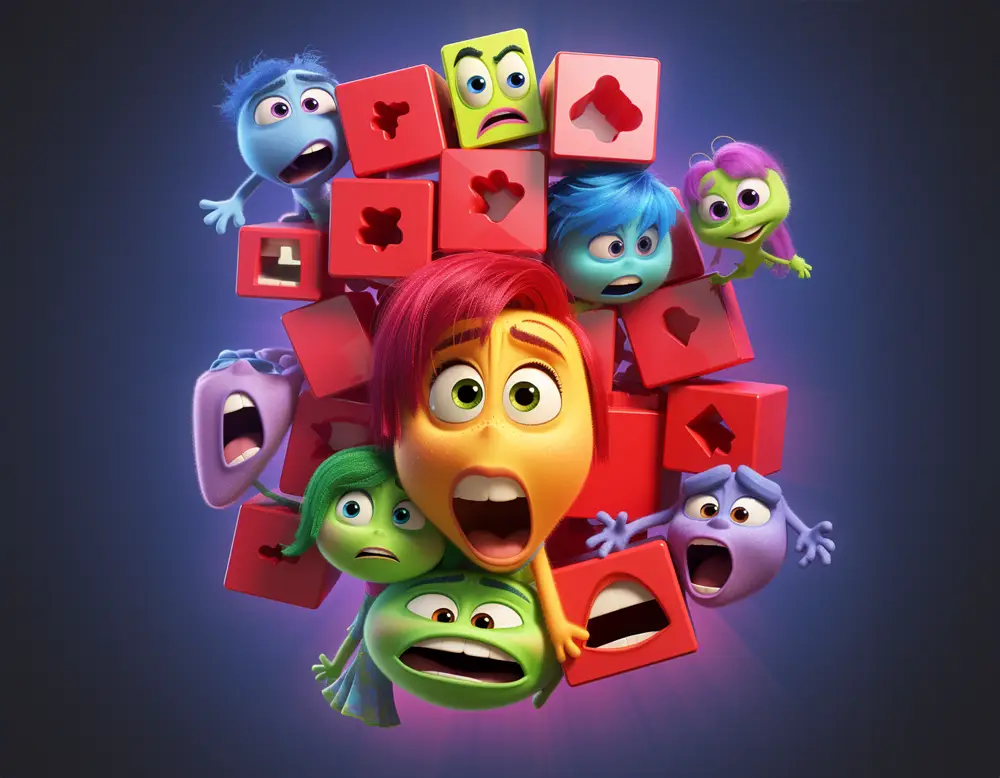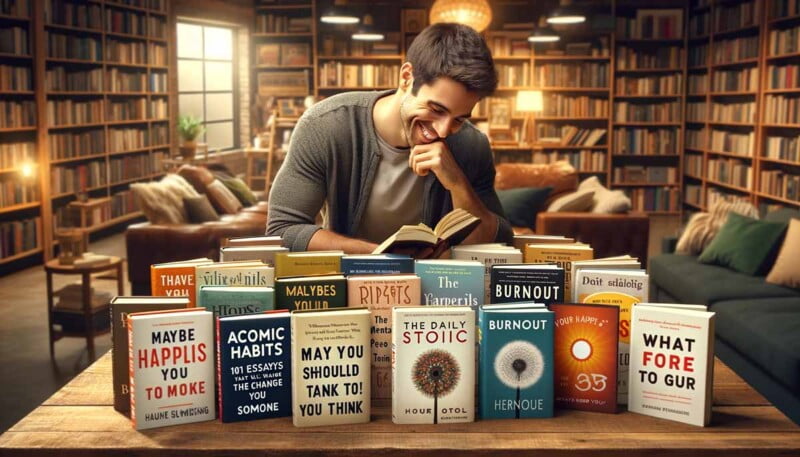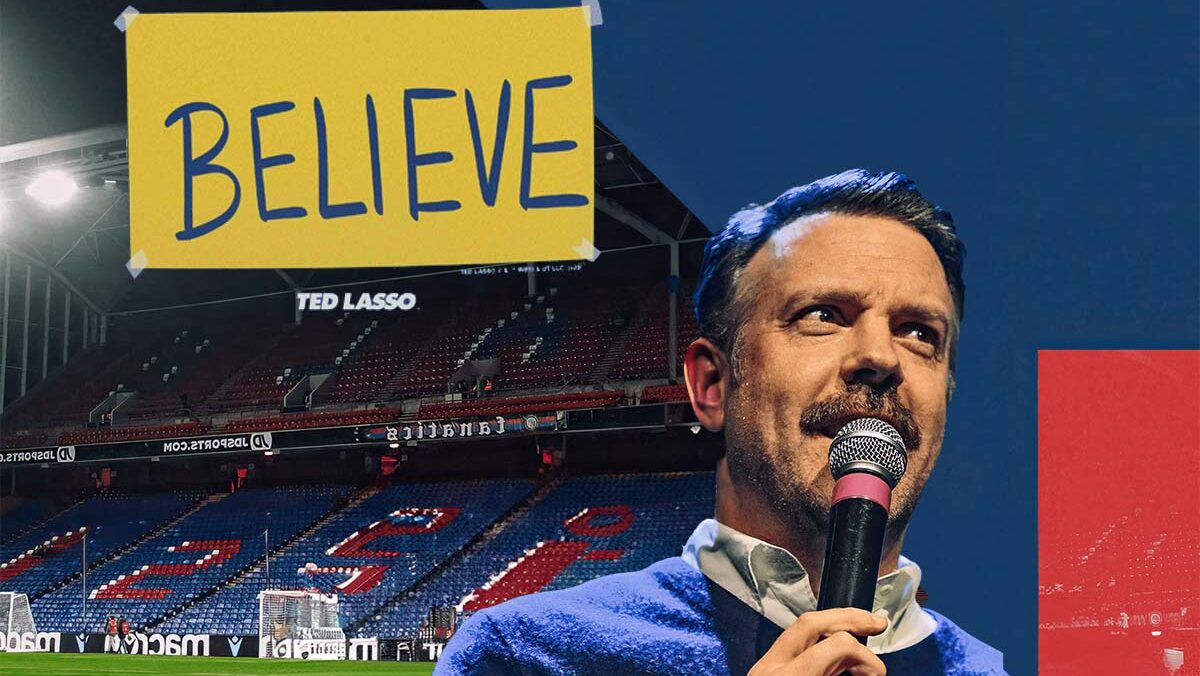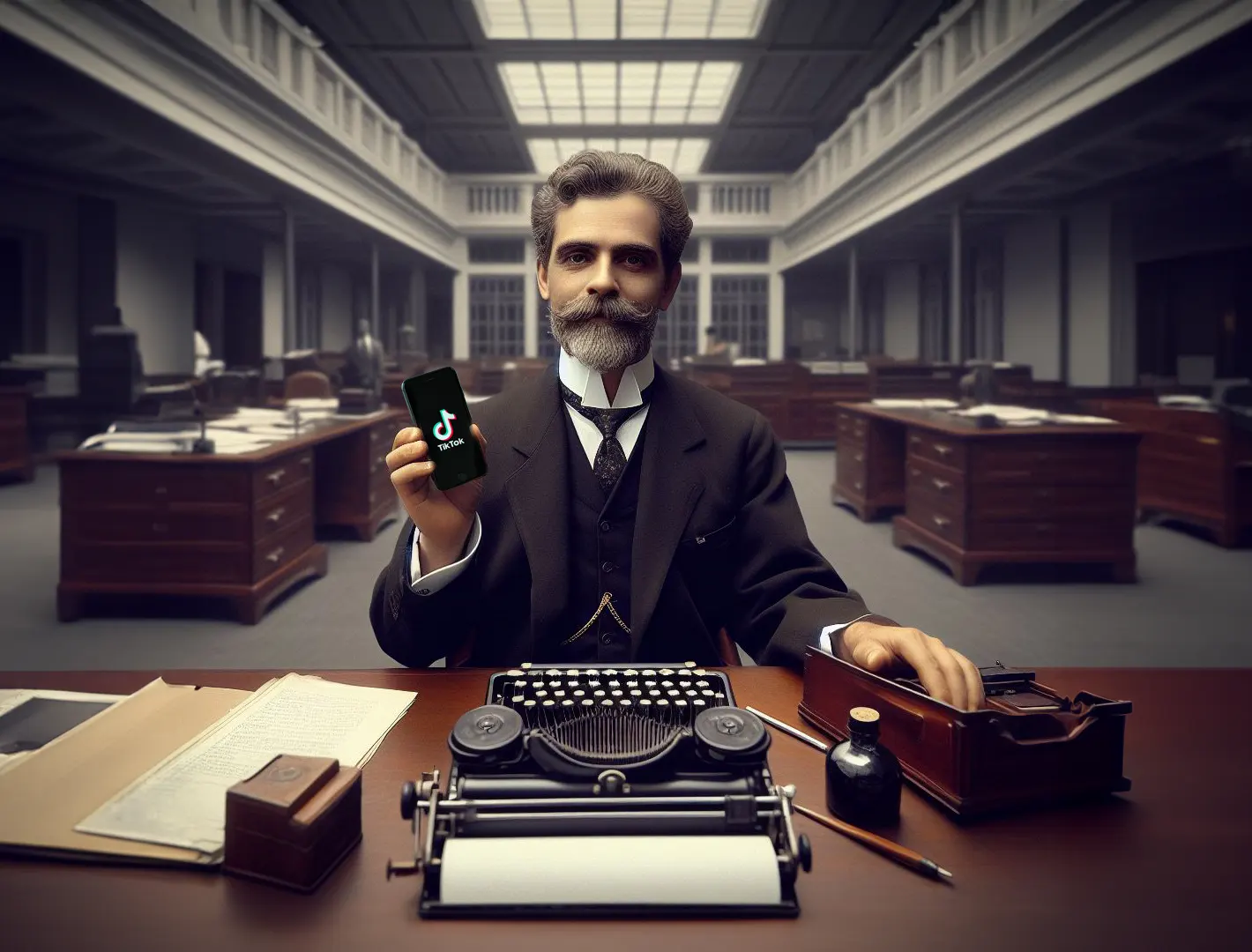Emotions in Inside Out 2: Mental Health, Relationships & Teen Love
A Fascinating Look at the Teenage Mind
As a therapist and mother of two, I’ve always been fascinated by how the human mind works, especially during those tricky teenage years. When Pixar released Inside Out in 2015—a true mental health movie that brilliantly portrays emotions in inside out—I was hooked.
This film is one of the most compelling of the films about mental health ever made, turning complex psychological ideas into a story that is both entertaining and deeply insightful.
With Inside Out 2, Pixar continues to amaze by exploring the intricacies of emotional relationships and the rollercoaster of feelings that come with growing up.
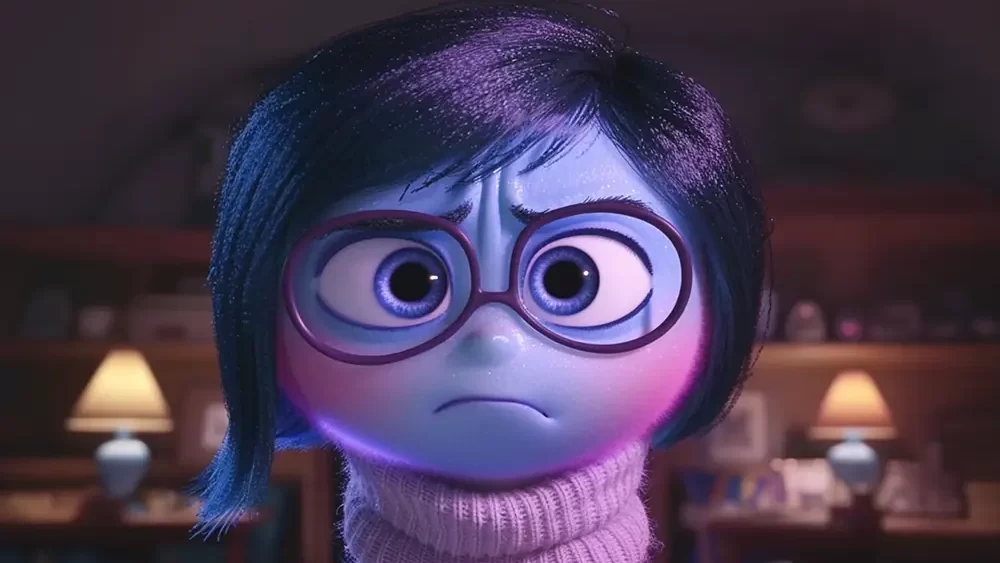
Revisiting Riley’s World
Inside Out 2 jumps forward in time, reuniting us with Riley, now 13 years old, navigating the maze of teenage love and the ups and downs of growing up. Her emotions have grown more complex, mirroring the real-life challenges of adolescence.
Back at Headquarters, the familiar characters—Joy, Sadness, Anger, Fear, and Disgust—still lead the charge, but now they face new challenges that echo the reality of emotional relationships and the delicate balance required in personal connections.
The evolving control room symbolizes the ever-changing landscape of a teenager’s mind.
Key Takeaway: Inside Out 2 brilliantly captures the chaotic yet beautiful nature of adolescence, offering valuable relationships tips for understanding and managing our inner world.
New Emotions on the Block
One of the standout features of Inside Out 2 is the introduction of new emotions. Anxiety, voiced by Maya Hawke, emerges as a relatable figure for anyone facing the uncertainties of adolescence. Her constant “what-if” scenarios capture the essence of many films about mental health that explore the internal struggles of the teenage mind.
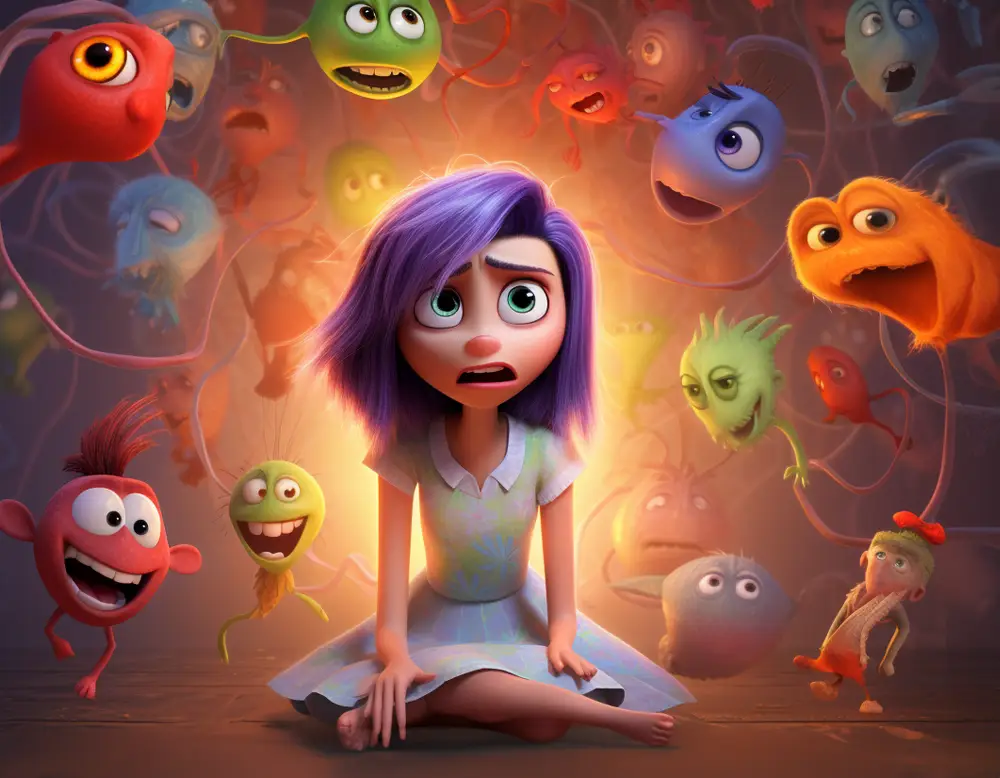
We also meet Envy and Embarrassment, which further illustrate the spectrum of emotions in inside out. Envy captures the fierce comparisons and jealousy in the age of social media, while Embarrassment embodies those cringe-worthy moments that often define teenage love.
Insightful Addition: The film’s nuanced portrayal of feelings like Anxiety and Embarrassment provides a realistic look at the emotional rollercoaster of adolescence, serving as both entertainment and education.
The Evolving Mind Map
Visually, the sequel ups the ante by expanding Riley’s mind. The introduction of The Deep Vault, where memories are stored, serves as a powerful metaphor for how past experiences mold our present identities—a concept that resonates with both mental health movie themes and real-life emotional relationships.
The Realm of the Subconscious is another fascinating addition, representing the fears and unresolved issues that often challenge our ability to form healthy bonds. This imaginative space offers unique relationships tips by showing that understanding our inner world is key to fostering positive connections.
The Hockey Camp Adventure
The heart of the story unfolds at a hockey camp, where Riley faces new social dynamics and forges new bonds. The camp is a microcosm of the wider world, full of competition, teenage love, and the quest for self-discovery—all elements that inform how we manage our emotional relationships.
Relatable Lesson: The film shows that while growing up can be messy and challenging, it also offers crucial opportunities to learn relationships tips that help us navigate our evolving emotional landscape.
The Complexity of Teenage Emotions
Inside Out 2 masterfully demonstrates that no emotion exists in isolation. For instance, while Anxiety may make Riley overly cautious, it simultaneously drives her to prepare for life’s challenges. This intricate interplay of feelings mirrors the real-world dynamics of emotional relationships among teenagers.
Expert Note: This portrayal reflects the true complexity of adolescence—a time when every emotion, even those deemed negative, contributes to personal growth and resilience.
Addressing Difficult Topics
One of the most powerful aspects of Inside Out 2 is its bold approach to topics such as body image, social pressure, academic stress, and mental health. This film stands out among films about mental health by tackling these issues with honesty and empathy.
- Body Image Issues: Riley grapples with the changes of puberty, confronting self-consciousness and the challenges of teenage love.
- Social Pressure: At hockey camp, she navigates the complex dynamics of peer influence and the struggle to belong.
- Academic Stress: The film touches on the pressure to excel academically while pursuing personal interests.
- Family Dynamics: It also reflects on how evolving emotions impact relationships within the family.
- Mental Health: The introduction of Anxiety opens up crucial conversations about mental health and coping strategies.
Takeaway: The film not only entertains but also educates, serving as a catalyst for discussions about mental well-being and healthy emotional relationships.
The Journey of Self-Discovery
At its core, Inside Out 2 is about self-discovery and embracing who you are. Riley learns to acknowledge her Anxiety as part of her identity—a lesson that resonates with anyone striving to improve their mental health and cultivate healthier emotional relationships.
Powerful Message: The film teaches us that every emotion, regardless of how challenging it may seem, has value in the journey toward personal growth.
The Role of Memory and Experience
Inside Out 2 also explores how memories and experiences shape who we become. As Riley confronts her past, the film reminds us that our memories, even the painful ones, are essential to understanding our present and building better relationships tips for the future.
The Importance of Emotional Intelligence
One of the aspects I cherish most about Inside Out 2 is its focus on emotional intelligence. Riley’s journey teaches us that managing our feelings is vital—not only for our own well-being but also for fostering strong and supportive emotional relationships. This lesson is invaluable for anyone navigating the tumultuous world of teenage love and beyond.
Therapist Insight: Emotional intelligence is the cornerstone of healthy relationships; it empowers us to understand, communicate, and connect more deeply with others.
The Power of Connection
The film underscores the importance of connection—whether it’s through family, friendships, or budding romances. These scenes offer practical relationships tips for nurturing bonds, reminding us that even in challenging times, connection is key to growth and healing.
Valuable Reminder: In the midst of life’s chaos, maintaining meaningful connections can provide the stability and support we need to thrive.
Visual Storytelling and Metaphor
Pixar’s mastery of visual storytelling shines through in every frame of Inside Out 2. Metaphors like the Islands of Personality and the Mind Cloud not only add depth to the narrative but also serve as powerful visual aids for understanding the intricacies of our inner lives.
Conclusion: A Message of Hope and Understanding
As a mother, therapist, and lifelong learner, Inside Out 2 touched me deeply. This mental health movie not only entertains but also offers a powerful message of hope and self-acceptance. It reminds us that growing up may be messy, but it’s also an opportunity to learn and build resilient, fulfilling emotional relationships.
The film encourages us to embrace every emotion as a vital part of our journey, offering insights and relationships tips that are especially relevant in the realms of teenage love and beyond.
Final Thought: Inside Out 2 isn’t just for kids—it’s a reminder for all of us that every emotion matters, and that embracing our feelings is the key to building healthier, happier relationships.
Take a Moment to Reflect
- What emotions have significantly influenced your growth, and how do you manage them today?
- How do you see the themes of mental health movie and films about mental health reflecting your own experiences?
- What relationships tips have you found most valuable when navigating emotional relationships and teenage love?
Join the Conversation
What did you think of Inside Out 2? How has it influenced your perspective on mental health and emotional relationships? Share your thoughts in the comments or on social media with #InsideOut2Emotions. We’d love to hear your story!
-

 Best Picks10 months ago
Best Picks10 months agoDriving Insurance: Get the Best Car Coverage Without Overpaying
-

 Best Rewards3 months ago
Best Rewards3 months agoBest rewards credit cards in 2025 for everyday use
-

 Personal Growth & Mindset1 year ago
Personal Growth & Mindset1 year agoTed Lasso Effect: 5 Goal-Setting Secrets You Must Know
-

 Career & Success1 year ago
Career & Success1 year ago30 Key Strategies for Growth: Mindset, Productivity & Wellness
-

 Personal Growth & Mindset1 year ago
Personal Growth & Mindset1 year agoMachado de Assis: This Viral TikTok Explains Why You Need to Read ‘The Posthumous Memoirs of Brás Cubas’ Now
-

 Career & Success12 months ago
Career & Success12 months agoChallenges of Not Having Goals: 5 tips to help you get started


